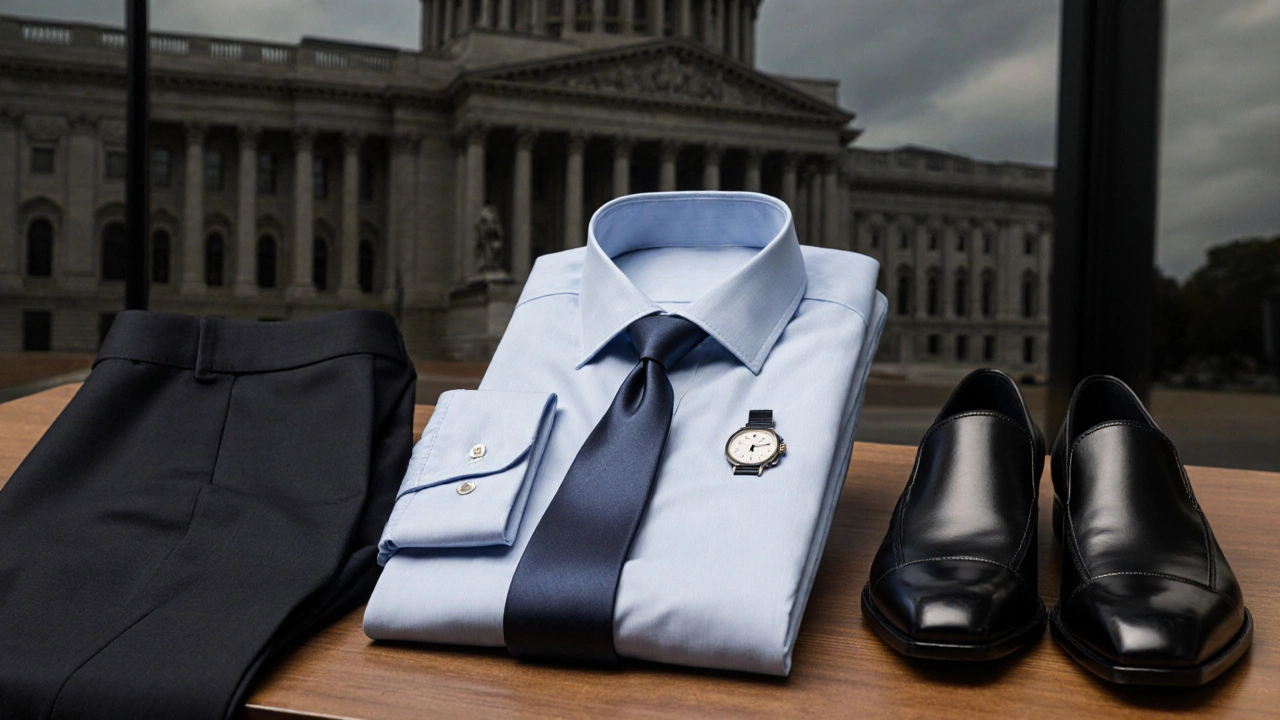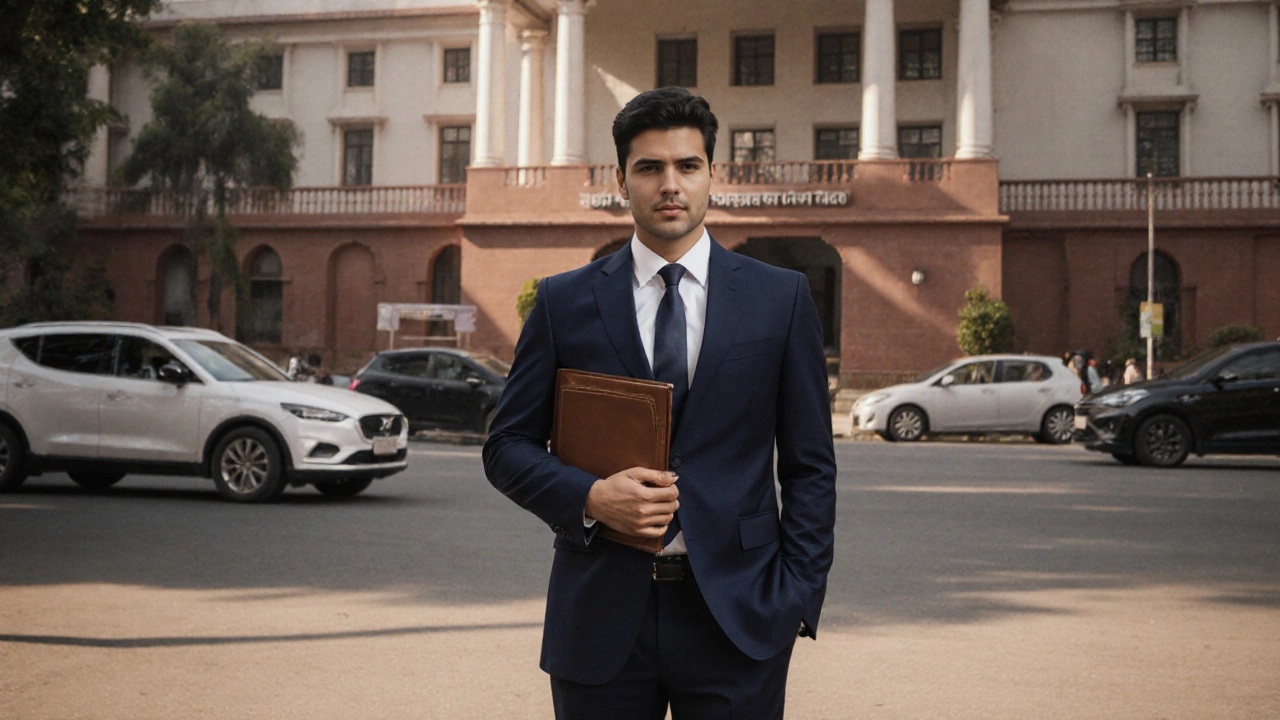Government Job Interview Outfit Checker
Select your outfit options and click "Check My Outfit" to see if your attire meets government interview standards.
Walking into a government job interview in India isn’t just about answering questions correctly-it’s about making the right first impression before you even speak. Your outfit speaks louder than your resume in these settings. The rules aren’t written in stone, but they’re understood by everyone who’s been through it. Get it wrong, and you risk looking careless. Get it right, and you signal respect, discipline, and professionalism-all qualities these jobs demand.
Why Dress Code Matters More in Government Interviews
Unlike private companies where culture might lean casual, government departments in India still operate with a strong emphasis on tradition, hierarchy, and formality. The interview panel isn’t just evaluating your skills-they’re assessing whether you fit into a system that values decorum. A candidate wearing jeans and a T-shirt, even if qualified, is often seen as disrespectful or unaware of institutional norms. This isn’t about being fancy-it’s about showing you understand the environment you’re trying to join.
Think of it this way: if you’re applying for a post in the Income Tax Department, you’re not just applying for a job-you’re applying to represent the government. Your appearance becomes part of your credibility. A 2023 survey by the Union Public Service Commission (UPSC) found that 68% of panel members noted appearance as a subtle but decisive factor in borderline cases. It doesn’t mean you’re graded on fashion, but it does mean you’re graded on perception.
What Men Should Wear
For men, the standard is simple: a full-sleeve shirt, formal trousers, and a blazer. No exceptions. Even in hot cities like Chennai, skipping the blazer is a red flag. The blazer isn’t just clothing-it’s a symbol of seriousness. Choose neutral colors: navy, charcoal, or dark gray. White or light blue shirts work best. Avoid patterns unless it’s a very subtle pinstripe.
Shoes matter more than people think. Polished black leather shoes are non-negotiable. No sneakers, no loafers without socks, no brown shoes unless you’re in a very specific regional office that allows it (and even then, it’s risky). Socks should be dark and match your trousers. No white socks. Ever.
Tie? Yes, unless the job description says otherwise. A solid silk tie in navy, maroon, or burgundy is ideal. Avoid loud prints, logos, or novelty ties. The tie should be long enough to reach your belt buckle. If you’re unsure, leave it off-but only if you’re absolutely certain the role is low-profile. Better safe than sorry.
What Women Should Wear
For women, the safest option is a formal salwar kameez or a tailored suit. A knee-length, full-sleeve salwar kameez in cotton or silk blend is widely accepted across India. Colors should be muted: beige, navy, olive, or soft gray. Avoid bright reds, glitter, or heavy embroidery. If you’re wearing a suit, go for a blazer with a matching skirt or trousers. Pantsuits are now common and perfectly acceptable in most departments.
Blouses should be modest-no low necklines, no transparent fabric, no tight fits. A simple dupatta or stole draped over the shoulders adds polish without being over the top. If you’re wearing a saree, choose a plain or lightly printed cotton or silk saree in neutral tones. Drape it neatly. Avoid heavy zari work or flashy jewelry.
Footwear should be closed-toe, low-heeled, and polished. Black or navy is best. Sandals, open-toed shoes, or high heels are risky. You might need to stand for long periods or walk through government office corridors-comfort matters as much as appearance.
Accessories: Less Is More
Accessories should be invisible. That means no dangling earrings, no chunky bracelets, no multiple rings. A simple pair of stud earrings (if you’re a woman) and a wristwatch are fine. Men can wear a simple watch and a wedding band. Avoid anything that jingles, glitters, or draws attention. The goal is to look professional, not fashionable.
Perfume or cologne? Skip it. Strong scents can be distracting or even trigger allergies. A clean, fresh smell from soap or deodorant is enough. Hair should be neatly tied back or styled simply. Avoid messy ponytails, loose strands, or extreme hairstyles.

What Not to Wear
Here’s a quick list of what will hurt your chances:
- Jeans, t-shirts, or casual shorts
- Sneakers, flip-flops, or sandals
- Graphic tees, hoodies, or sportswear
- Overly tight or revealing clothing
- Heavy makeup, bright lipstick, or glitter
- Large, noisy jewelry or accessories
- Wrinkled or stained clothes
- Unkempt beard or mustache (men)
Even if you’re applying for a clerical job in a rural district office, don’t assume they’ll be lenient. Government offices are conservative by nature. A candidate who looks like they just stepped out of a café will be dismissed before the first question is asked.
Dress for the Department
Not all government jobs are the same. A post in the Ministry of External Affairs or the Indian Foreign Service demands a more formal, almost diplomatic look-think tailored suits, silk ties, and polished shoes. For a position in the Forest Department or Rural Development, a clean salwar kameez or formal shirt-trouser combo is enough. The key is to match the tone of the department.
If you’re unsure, look up photos of previous interviewees online (from official recruitment portals or YouTube interviews). Notice the patterns. Most successful candidates dress the same way: neat, simple, and respectful.
Final Checklist Before You Leave
Here’s what to double-check the night before:
- Iron your clothes-wrinkles scream laziness.
- Polish your shoes-dusty shoes ruin even the best outfit.
- Trim your nails and tidy your hair.
- Check for loose threads or missing buttons.
- Carry a clean handkerchief and a small mirror.
- Bring a folder with your documents-neatly organized.
- Wear your outfit once before the interview to test comfort.
Don’t wait until the morning to iron your shirt. Don’t try a new deodorant. Don’t wear new shoes that haven’t been broken in. These small things can derail your confidence on the most important day.

What If You’re on a Budget?
You don’t need to spend thousands. A decent formal shirt and trousers can be bought for under ₹1,500 in Chennai’s T. Nagar or Hyderabad’s Abids. Look for sales at stores like Max, Landmark, or even local tailors who make custom shirts for ₹400-600. For women, a simple cotton salwar kameez from a local market costs ₹800-1,200. Borrow a blazer from a relative if you don’t own one.
The goal isn’t to look rich-it’s to look prepared. A well-fitted, clean outfit from a budget store beats a wrinkled designer suit every time.
Confidence Comes from Preparation
Wearing the right clothes won’t get you the job-but wearing the wrong ones will definitely lose it. This isn’t about fashion. It’s about discipline. It’s about showing up as someone who follows rules, respects structure, and understands the gravity of public service.
When you walk into that room, you’re not just a candidate. You’re a representative. Dress like one.
Can I wear a kurta to a government job interview?
A plain, well-fitted kurta paired with formal trousers and a blazer is acceptable for some regional government posts, especially in southern or eastern India. But avoid printed or casual kurtas. Stick to solid colors like white, beige, or navy. If in doubt, go with a full-sleeve shirt and trousers instead-it’s universally safe.
Is it okay to wear a saree for a government interview?
Yes, but only if it’s simple and professional. Choose a cotton or silk saree in muted colors like beige, navy, or gray. Avoid heavy zari, sequins, or bright patterns. Drape it neatly, and pair it with a plain blouse. A stole or dupatta adds polish. Make sure you can move comfortably-you may need to walk across a large office.
Should I wear a tie if I’m applying for a clerical job?
Yes. Even for clerical roles, a tie signals professionalism. Panelists expect it. Skipping it might make you seem casual or unaware of norms. A simple solid tie in navy or burgundy works perfectly. It costs little and adds a lot to your credibility.
Can I wear makeup to a government interview?
Light, natural makeup is fine. Use foundation, a touch of blush, and neutral lipstick. Avoid bold colors like red, pink, or glitter. The goal is to look fresh and polished-not made up. Heavy makeup distracts and can come across as unprofessional in conservative settings.
What if I’m interviewing in a cold city like Delhi in winter?
Layer your outfit. Wear a thermal inner shirt under your formal shirt, and add a woolen blazer or a dark overcoat. Keep your shoes and socks warm. Don’t wear a heavy woolen sweater or scarf inside the interview room-remove them before entering. The panel needs to see your formal attire clearly.
Is it okay to wear glasses to the interview?
Absolutely. Glasses are not a drawback-they’re a sign of practicality. Just make sure they’re clean, the frames are simple (no flashy colors), and they suit your face. If you have multiple pairs, choose the most professional-looking ones. No sunglasses or tinted lenses indoors.
Next Steps After the Interview
Once you walk out, don’t second-guess your outfit. You did what you could. Now focus on preparing for the next stage-whether it’s a written test, document verification, or medical checkup. Keep your clothes clean and pressed for future rounds. Many government interviews have multiple stages, and you’ll likely wear the same outfit again.
If you didn’t get the job, don’t blame your clothes. But if you did, remember this: the same discipline you showed in how you dressed will serve you well in your new role. Government service rewards consistency, not flash. Dress like you belong-and you just might.

Write a comment